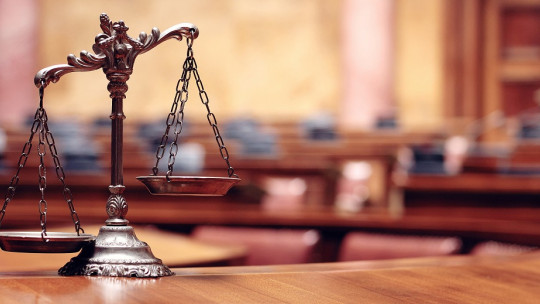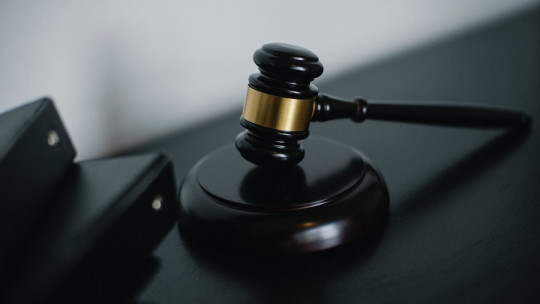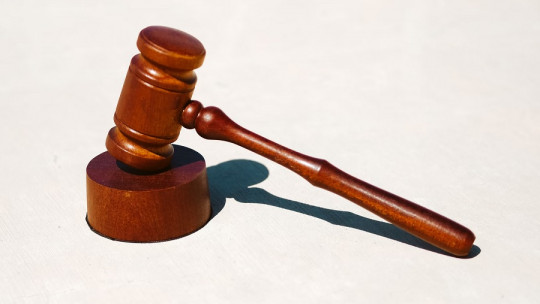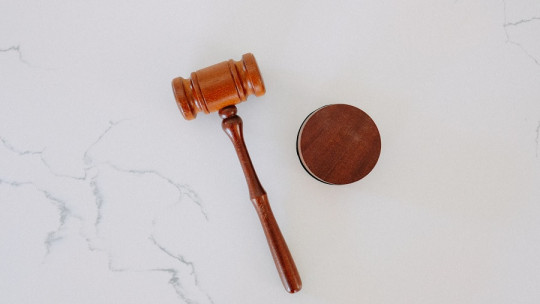
One of the most important parts of forensic psychology is that which is responsible for studying the credibility of testimony
We are going to discover how this task is carried out, what tools are used and how the maximum possible reliability is achieved.
What does the evaluation and analysis of testimony consist of?
Psychology has a great role in the judicial field for many reasons but one of the most relevant is to be in charge of the evaluation and analysis of the testimony, a fundamental task in many cases in which the own account of the witness or victim of a crime is the only evidence, or one of the few that exists, to be able to reach the truth of the event, which would be key when making a decision and handing down a sentence.
Within forensic psychology, the psychology of testimony would be the branch of this science that would carry out the investigations and develop the necessary methodologies to carry out an analysis of the story that is as rigorous and reliable as possible, within the possibilities offered by the situation. .
The psychology of testimony, therefore, aims to verify the degree of truthfulness of a statement on a certain matter And in many cases it is not easy to reach a conclusion. Let’s stop to look in depth at two issues that are fundamental in the evaluation and analysis of testimony: accuracy and credibility.
Accuracy of testimony
The first problem we face is evaluating the accuracy of the testimony, and that is that human memory is not as reliable as we would like, and there can also be very significant differences between the memory capacity of one person and another. Our memory does not work like a video camera in which we press the record or play button saving and recovering the images exactly as they occurred, far from it!
The problems begin at the very moment of experiencing the event at hand, since depending on the person’s capabilities, the attention they are paying, the stress they are experiencing, and many other variables, the subject will encode the information. in your brain in a more or less reliable and lasting way.
Later comes the problem of memory recovery. Likewise, the characteristics of the person themselves and their memory will make it more or less easy to recover the data, but other factors also come into play, such as the time elapsed between the event and the recovery, and another that is fundamental in this discipline. : suggestibility.
That is why it is tremendously important that the interview be carried out by a psychologist who is an expert in testimony to guide and obtain information always through neutral questions, that do not contaminate the story or do so as little as possible.
Credibility of the testimony
But there is another issue that is just as important as accuracy, and that is credibility. Because, what happens if what the subject is telling us is not that it is not accurate, but that it is not even true? There are several situations in which a person can give false testimony.
First of all, he may be lying, plain and simple because with this he obtains a benefit, whether it is exonerating himself from a crime or achieving that by incriminating another person (or by having them not be incriminated) he achieves a profit, or a person from his environment does so.
Secondly, it may be that the person has made interpretations of what happened that do not correspond to reality, and therefore is recounting events that did not really happen, or at least not in the way in which they are telling them. so his testimony would lack credibility.
Finally, the situation may arise that the subject has been suggested, especially if their cognitive abilities are not fully developed, either due to age or having a disability. In these cases, these individuals would be creating a more or less implausible story about events that did not actually occur.
Precisely, children and people with intellectual disabilities are two of the groups on which the evaluation and analysis of testimony is most studied, since they have much more limited tools when it comes to presenting their story and also, as we have already mentioned, they are especially susceptible to suggestibility. This is especially relevant in cases of sexual abuse, since each word must be measured with absolute rigor during the interview to obtain quality testimony that allows us to draw informed conclusions. Later we will see the technique used for this.
Tools to evaluate testimony
We have already seen the relevance of the study of testimony and the need to do it in a rigorous and reliable way, since What is at stake is often a sentence with legal implications of tremendous importance Therefore, it is necessary to have tools that guarantee that the process is as objective and standardized as possible.
Below we will compare different techniques and tools that can be used and even combined, if necessary, in order to achieve the best possible result and thus offer the judge the most reliable information so that he can issue a sentence in one direction or another, having all the data. on the table.
1. Psychophysiological techniques
On the one hand there are psychophysiological measurement techniques, the famous polygraph. There is a great popular legend around this technique, so much so that It is popularly called a “lie detector”, but you have to be very cautious when using it The principle on which it is based is that a person, when lying, tends to show a series of physiological signals that, although they are imperceptible to the eye, can be measured and verified with the appropriate instruments.
In this way, the polygraph would detect changes in a person’s heart rate, sweating, breathing or blood pressure while giving their testimony, so that the investigator can check these physiological patterns and estimate to what extent they could be compatible with a true statement. or a false one.
This instrument has many limitations, for which it has received a multitude of criticisms in the scientific community. Physiological response patterns can vary greatly between people, and we can obtain false negatives, because the individual is able to control their bodily responses while exposing a lie, but also false positives, due to other subjects who, even though they are telling the truth, are too nervous to tell the truth. feel intimidated by being evaluated with this contraption.
2. Behavioral indicators
On the other hand, It is as important to pay attention to what a person says as to how they say it, and behavioral indicators can be key when estimating the quality and veracity of a testimony. This includes both verbal and non-verbal language.
The psychologist must pay attention to the subject’s gestures, his posture, where he directs his gaze if he is hesitant at key moments, if he takes detours to express an idea…
The problem with this technique is that it requires a lot of practice and experience on the part of the researcher to know how to interpret the subject’s response patterns. Furthermore, although there are behaviors that are repeated in certain situations and therefore can be extrapolated, there can be great differences between different individuals, and therefore it is important to be cautious and take these behaviors as indicators that increase or decrease the probability of veracity, never as an absolute of truth or lie.
3. SVA, evaluation of the validity of the declaration
The tool par excellence in testimony psychology is the SVA, or Statement Validity Assessment. Is about an evaluation method created to evaluate the credibility of testimony in cases of alleged sexual abuse of minors
The key on which the SVA is based is the Undeutsch hypothesis, which maintains that a testimony based on a truly occurred event has different content richness criteria from those that come from an invented event.
The SVA system is divided into three parts.
The CBCA is a list with 19 criteria that They must be evaluated through the content obtained in the transcription of the interview, checking if they occur and to what extent The first three are the fundamental ones, and they must be given in order to continue carrying out the analysis, or the testimony is considered incredible. Are these:
The rest of the criteria are grouped by categories, referring to the specific contents of the story, its peculiarities, the motivations for the events and finally, the key elements of the criminal act.
Therefore, today, The tool that offers the most guarantees in the evaluation and analysis of testimony is the CBCA within the SVA system, although we have already seen that it is used for a very specific case.








